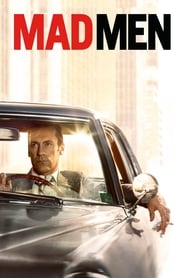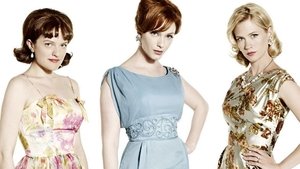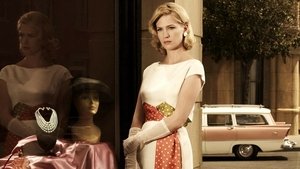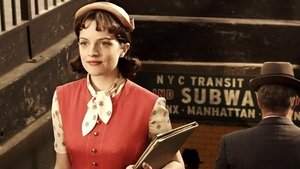
Seasons and episodes
1Season 1 Jul. 19, 2007
 1 - AllS01 Ep(1-13) Feb. 07, 2022
1 - AllS01 Ep(1-13) Feb. 07, 2022
2Season 2 Jul. 27, 2008
 2 - AllS02 Ep(1-13) Feb. 07, 2022
2 - AllS02 Ep(1-13) Feb. 07, 2022
3Season 3 Aug. 16, 2009
 3 - AllS03 Ep(1-13) Feb. 07, 2022
3 - AllS03 Ep(1-13) Feb. 07, 2022
4Season 4 Jul. 25, 2010
 4 - AllS04 Ep(1-13) Feb. 07, 2022
4 - AllS04 Ep(1-13) Feb. 07, 2022
5Season 5 Mar. 25, 2012
 5 - AllS05 Ep(1-13) Feb. 07, 2022
5 - AllS05 Ep(1-13) Feb. 07, 2022
6Season 6 Apr. 07, 2013
 6 - AllS06 Ep(1-13) Feb. 07, 2022
6 - AllS06 Ep(1-13) Feb. 07, 2022
7Season 7 Apr. 13, 2014
 7 - AllS07 Ep(1-14) Feb. 07, 2022
7 - AllS07 Ep(1-14) Feb. 07, 2022
Creator
Creator
Cast
Don Draper
Roger Sterling
Peggy Olson
Pete Campbell
Betty Draper
Joan Holloway
Bertram Cooper
Ken Cosgrove
Harry Crane
Sally Draper
Video trailer
Synopsis
Mad Men Season 1-7 Download In English 720p
StoryLine:
If your last experiences of Mad Men were the closing episodes of the final series – with Don Draper making like Kerouac to the west coast – then to revisit the series at its very beginning, in the smoky cool of 1960 New York, is to land with the judder of a Mohawk touching down at Idlewild airport. This isn’t just a different decade; it might as well have been a different century.Matthew Weiner’s aim, over 92 episodes, wasn’t to tell the story of an advertising agency at the dog-end of America’s 20th-century imperial period (though, of course it was that, too), but to chronicle the 1960s through the prism of an industry as integral to ideas of modern America as car-manufacturing and computing.Mad Men Season 1-7 Download.
Mad Men, out on box set next week, possessed such quality throughout its run that by the end of that first episode, let alone the first few series, the macro themes of its entire run are established. Be that civil rights (in the first scene, a black waiter is told off for talking to Draper); second-wave feminism (the introduction of Peggy Olson, whose rise from secretary to executive would mirror advances for women) and the might of corporations (a cigarette firm trying to spin against cancer studies). The list goes on.
By going back to the beginning, you see how carefully Weiner and his team of writers planted seeds not just for these larger stories, but for the smaller themes. The early 1960s Manhattan inhabited by the staff at Sterling Cooper may have seemed like a Norman Rockwell painting, but it quickly turned into an Edward Hopper. The spectre of Nixon, race crimes and riots, crime in New York, the rise of the Greenwich Village folk scene, hippies (your basic 1960s social bingo) are all hinted at before they become explicit plotlines.
Additional Links:
Original title
Mad Men
TMDb Rating
8.1 780 votes
First air date
Jul. 19, 2007
Last air date
May. 17, 2015
Seasons
7
Episodes
92
Average Duration
47 minutes


























![The Mosquito Coast [Season 2]](https://image.tmdb.org/t/p/w185/cCwCjqeUSGcqHmryupjW2Hd8F3T.jpg)

![Crazy Love [ORG Hindi]](https://image.tmdb.org/t/p/w185/2N5Bixu3UQEONjDECicFqssCkxg.jpg)






